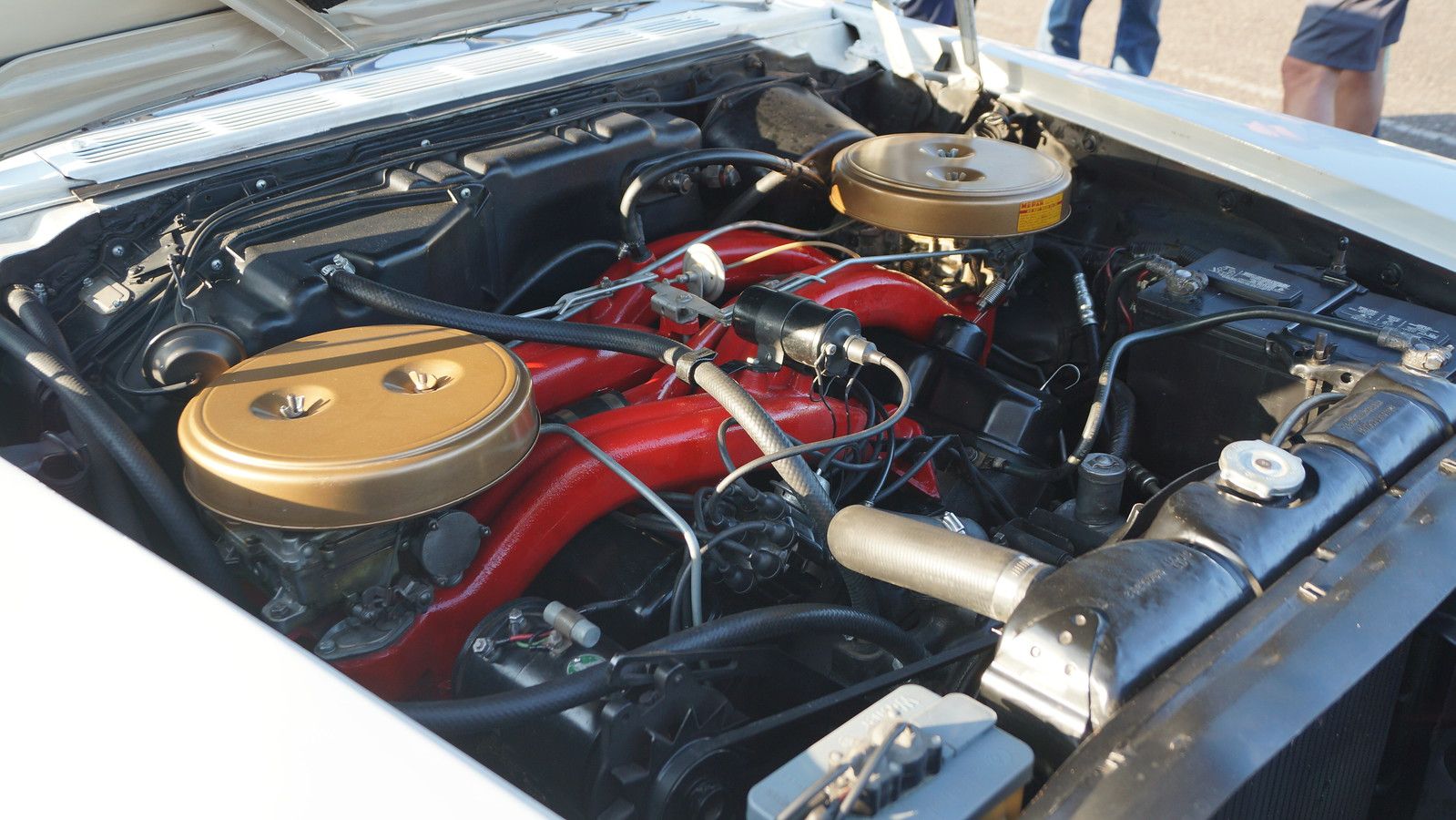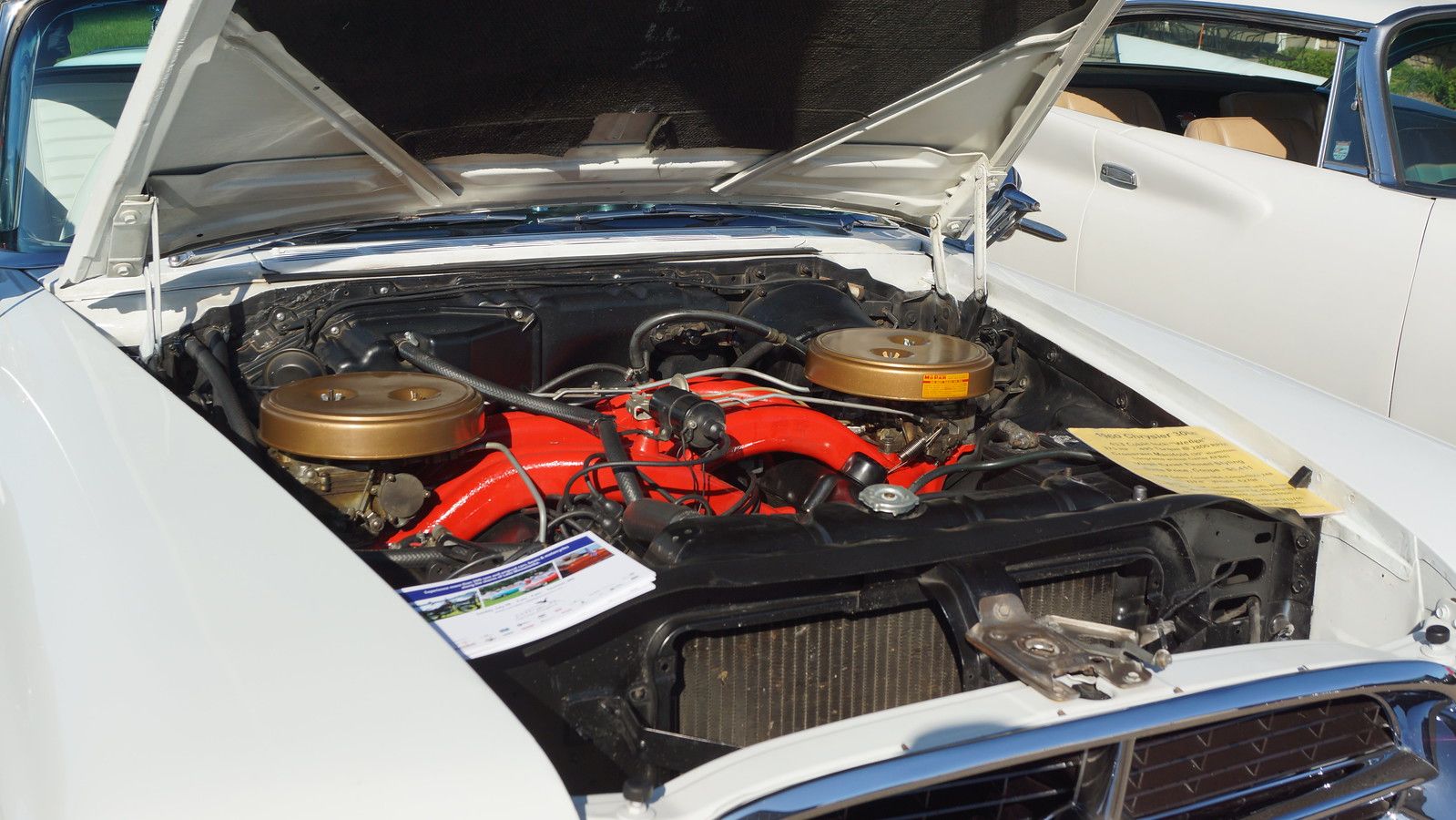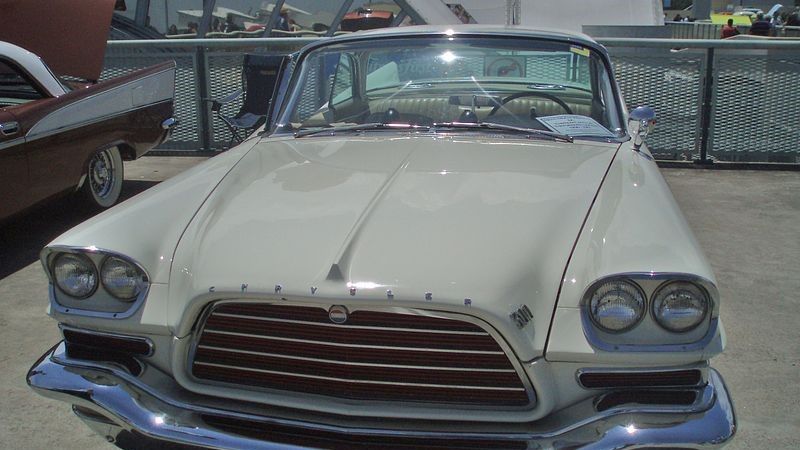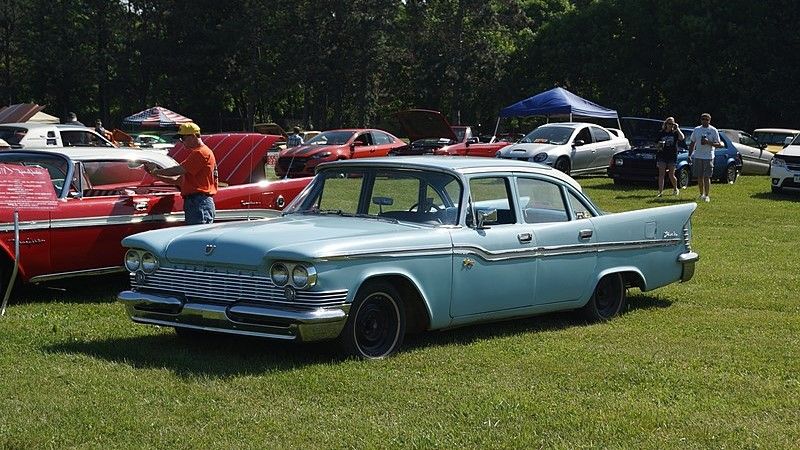It isn't unheard of for car companies to change their logo from time to time. Recently, Kia did this, adopting a space-age-like emblem. Ford's emblem has grown simpler over time. Chrysler adopted a major change both to and away from the wing-like designs. Alongside their main branding, manufacturers use smaller sub-brands, think Cobra, RS, and Hellcat. With powerful names, they denote that something special hides underneath the bonnet. At some point the Hellcat nameplate will disappear like performance brands before them within the Chrysler family. One of these is Golden Lion, a product line hidden in Chrysler's near century-long history. Available across a range of Chrysler, Dodge, and Plymouth models, the engine is a forgotten part of America's performance car history.
The Golden Lion paved the way to NASCAR's famous 426 Hemi engine.
What Is The Golden Lion?
Chrysler marketed Golden Lion vehicles, as “The lion hearted car that is every inch a new adventure.” This simply meant that they had large, powerful V8 engines. These were the RB 383 and 413 V8 units. These engines are golden because a gold color dominates part within the engine bay. The RB series of engines continued their raised block design with the 426 Wedge and 440. However, these units did not receive Golden Lion branding. Lighter and more powerful than the Hemi engines that preceded, this engine was the next step in MOPAR brand Muscle. However, the Hemi stayed a part of Chrysler's lineup and still is to this day.
Introduced in 1959 the RB engines stayed in production until 1979. These engines use what a wedge combustion chamber design. Conventional designs had flat combustion chamber walls which meant more fuel came into contact with the walls and heat could dissipate. This heat energy is a waste of potential power. Hemi-spherical designs reduced the amount of fuel that made contact with the cylinder walls. This enabled higher cylinder pressure and more power. The wedge is the next step in this design.
RB engines followed the B series of engines, Chrysler's first foray into Big Block power units. These two lines of engines were Chrysler's most powerful units until 1964. The 426 Hemi launched this year and took the title. Although it wasn't Chrysler's first Hemi engine, it was the first sold under the name, creating the lineage which now culminated in the Dodge Hellcat lineup.
What Chrysler Cars Have The Golden Lion?
The largest Golden Lion engine, the 413 powered the brand's flagship New Yorker model. The luxury car had this power unit through its fifth, sixth, and seventh generations. It only dropped out of the lineup in favor of the larger 440 engines, as the car continued to grow in its opulence. The smaller 383 found its way to Windsor for 1959. Cars with the Golden Lion have subtle indications of their performance. On the doors rest a small gold lion's head.
Notably, the 413 Golden Lion powered the Chrysler 300 from the 300E to the 300L and featured on the non-lettered series of cars. Whilst not a conventional muscle or pony car the 300 packed plenty of punch with the Golden Lion engine. The 300E has a claimed 0-60 mph time of only 8.3 seconds. Chrysler's engineers achieved this through a 380 horsepower rating, impressive considering that larger 7-liter units frequently produced less than this. The first Dodge Viper only got 400 horsepower out of its 8-liter V10 engine. Not content with a large power figure, the 300E has a range of luxurious features. Topping the list is power steering and front swivel seats, making the car both practical and comfortable.
How Much Does A Golden Lion Car Cost?
Classic, an aggregator of classic and used car sales, indicates an interesting situation in the Golden Lion market. Convertible 300E models carry a massive price tag, averaging $182,875. The highest recorded sale occurred in 2018 at a might $286,000. Recent sales are commanding lower premiums but still, more than double that of a hardtop model. These ask on average only $46,600. It is obvious that 300E is Convertible it is an iconic car and beneath the surface is a powerful engine that demands respect. Classic claims that the convertible only ever had 140 examples made in its only model year in 1959. This further drives up prices. This trend continues throughout the Chrysler 300 models with F, G, H, and K convertibles asking for twice that of their coupe counterparts.
Later 300 models like the 300L are much more common, with more examples on the road. Classic record an average of only $16,200 for this generation which saw 2405 cars sold. These vehicles, with the 413, carry a reduced price tag. But this does not mean the cars have less power. According to All Par, these models have a “long-tube ram induction system”, this boosts torque to 495 lb-ft of torque. The Chrysler Windsor equipped with the smaller RB 383 V8 is rare, but unlike the convertible 300 models, it doesn't have much demand. As a less stylish saloon, there's less demand for the vehicle. Prices sit as low as $8000 if a buyer can find an example.




